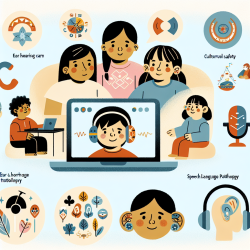As practitioners dedicated to creating great outcomes for children, understanding the latest research and implementing evidence-based strategies is crucial. The scoping review titled Ear and hearing care programs for First Nations children: a scoping review provides valuable insights into how we can improve ear and hearing care services for First Nations children. This blog will highlight key findings and practical strategies from the review that can enhance your practice.
Key Findings
The review identified several critical aspects of ear and hearing care programs for First Nations children in high-income colonial-settler countries. These programs primarily focus on two points along the care pathway: detection and diagnosis/management. Here are the main strategies used:
- Connecting Patients to Specialist Services: Telehealth and outreach programs were commonly used to extend the geographical reach of services.
- Ensuring Cultural Safety: Programs often involved Indigenous Health Workers (IHWs) to ensure services were culturally safe.
- Increasing Access: Screening and education/awareness programs were implemented to improve entry into care pathways.
Implementing These Strategies in Your Practice
To enhance your practice based on these findings, consider the following strategies:
- Leverage Telehealth: Use telehealth to connect children in remote areas to specialists. This can reduce travel time and ensure timely care.
- Involve Indigenous Health Workers: Employ IHWs to provide culturally safe care. This can improve patient trust and adherence to treatment plans.
- Conduct Community-Based Screenings: Implement regular screening programs in communities to detect ear and hearing issues early.
- Provide Education and Awareness: Educate parents, caregivers, and community members about the importance of ear and hearing care.
Future Directions
The review also highlighted areas needing further research and improvement:
- Sustainability: Many programs rely on short-term funding. Sustainable funding mechanisms are crucial for long-term success.
- Comprehensive Outcome Measures: Programs should be evaluated not just on outputs but also on long-term outcomes like speech and language development, academic achievement, and overall well-being.
- Community Involvement: First Nations communities should be involved in all stages of program development, implementation, and evaluation to ensure the programs meet their needs.
By incorporating these strategies into your practice, you can contribute to better health outcomes for First Nations children. For a more detailed understanding and to read the original research paper, please follow this link: Ear and hearing care programs for First Nations children: a scoping review.










